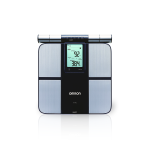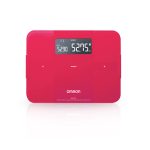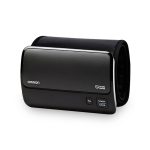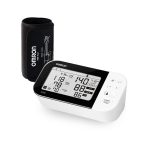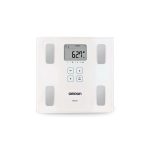White Coat Syndrome: Why Your BP Spikes at the Doctor’s Office
May 23, 2025 2025-05-23 11:33White Coat Syndrome: Why Your BP Spikes at the Doctor’s Office
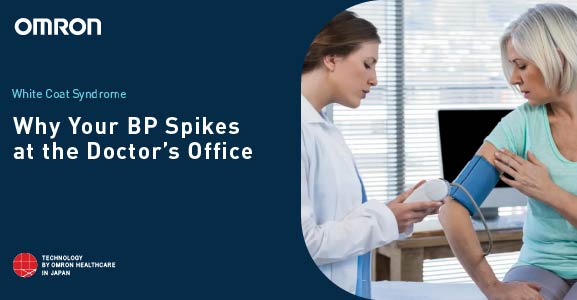
White Coat Syndrome: Why Your BP Spikes at the Doctor’s Office
For Every 1 in 5 people or 20% of population who visits a clinic gets anxiety-driven BP Spikes However, this may not always indicate a long-term health issue. White Coat Syndrome, also known as White Coat Hypertension, is a condition where blood pressure spikes in medical settings due to stress or anxiety. This can lead to unnecessary concerns, misdiagnosis, or even the prescription of medication that may not be required. Understanding White Coat Syndrome and monitoring your BP at home with a digital blood pressure machine can help ensure accurate readings and better blood pressure management.
What is White Coat Syndrome?
White Coat Syndrome refers to the phenomenon where individuals experience a temporary increase in blood pressure when measured at a doctor’s office, hospital, or clinic, but their readings remain normal in everyday settings. This condition affects nearly 20% of patients, making it one of the most common reasons for misdiagnosed hypertension.
Key Characteristics of White Coat Syndrome:
- Blood pressure readings are higher in medical settings but normal at home.
- Anxiety about the doctor’s visit triggers a stress response.
- Patients may not show other signs of chronic hypertension.
This is why medical professionals recommend home BP monitoring using a digital blood pressure monitor for a more reliable assessment of long-term cardiovascular health.
Why Does White Coat Syndrome Happen?
The main reason for White Coat Hypertension is stress and anxiety. When a patient enters a medical setting, their nervous system becomes overactive, leading to increased heart rate and constricted blood vessels, which temporarily raises blood pressure levels.
Common Triggers of White Coat Syndrome:
- Fear of Medical Settings – Many people feel anxious about medical tests, procedures, or potential diagnoses.
- Doctor-Patient Interaction – The presence of a doctor or nurse can unconsciously increase stress levels.
- Previous Negative Experiences – A bad experience with medical procedures can cause subconscious anxiety.
- Overthinking the BP Test – When patients become hyper-aware of their BP reading, it can influence the result.
By monitoring blood pressure with a BP monitor machine at home, patients can eliminate these external stressors and get a more accurate picture of their actual BP levels.
Why White Coat Syndrome Can Be Misleading
One major concern is that White Coat Syndrome can lead to unnecessary treatment. A single high BP reading at the doctor’s office does not necessarily mean a patient has chronic hypertension. However, if a doctor suspects high blood pressure based on office readings, they may prescribe lifestyle changes or medication when it may not be needed.
To avoid misdiagnosis, it is recommended to use the best BP monitor in India to track BP readings in a calm home environment.
How to Monitor Your Blood Pressure at Home Accurately
For individuals experiencing White Coat Syndrome, regularly tracking BP at home using a BP machine for home can provide more reliable data.
Steps for Accurate Home BP Measurement:
- Use a Clinically Validated BP Monitor – Choose a digital blood pressure monitor that is accurate and reliable.
- Sit Comfortably in a Quiet Place – Ensure your back is supported, feet are flat on the floor, and arm is at heart level.
- Avoid Stimulants Before Testing – Do not drink caffeine, smoke, or exercise 30 minutes prior.
- Take Readings at the Same Time Daily – Measure BP morning and evening for consistent tracking.
- Record Readings for a Few Days – Tracking trends over time is more important than a single reading.
Using a BP reading machine allows individuals to provide their doctor with real-life blood pressure readings, which reduces the chances of misdiagnosis.
How to Reduce Anxiety Before a BP Test
If you suspect White Coat Syndrome, relaxation techniques can help lower BP before a test:
- Deep Breathing Exercises – Slow, controlled breathing can help calm the nervous system.
- Meditation & Mindfulness – Practicing mindfulness before an appointment can reduce stress.
- Distraction Techniques – Listening to music or reading while waiting can prevent anxiety buildup.
- Talking to Your Doctor – Letting your doctor know about your BP-related anxiety can help them create a calmer testing environment.
Who is at Risk for White Coat Syndrome?
White Coat Syndrome is more common in certain individuals, including:
- Those with General Anxiety or Stress Disorders
- People Who Rarely Visit the Doctor
- Patients with a Family History of Hypertension
- Individuals Who Have Had Past High BP Readings in Medical Settings
For those at risk, using a BP measuring device at home can help track BP in a comfortable environment, leading to more accurate readings.
When to See a doctor
If home BP readings using a digital blood pressure machine consistently show high numbers, it may indicate actual hypertension rather than White Coat Syndrome. Signs that indicate a need for medical consultation include:
- Consistently high BP at home and at the doctor’s office
- Headaches, dizziness, or shortness of breath
- Sudden fluctuations in blood pressure readings
- Signs of heart disease (chest pain, fatigue, irregular heartbeat)
If BP remains elevated outside medical settings, a healthcare provider may recommend lifestyle changes, medication, or further testing.
Conclusion
White Coat Syndrome can lead to misleading BP readings, unnecessary stress, and potential overtreatment. By using a BP monitor machine at home, individuals can track their BP more accurately and provide doctors with real-world readings. Investing in the best BP monitor ensures accurate monitoring and better long-term cardiovascular health.
If you frequently experience high BP at the doctor’s office, consider using a BP machine for home to take control of your blood pressure management. Understanding your BP patterns and addressing anxiety can help you maintain heart health and avoid unnecessary concerns.

